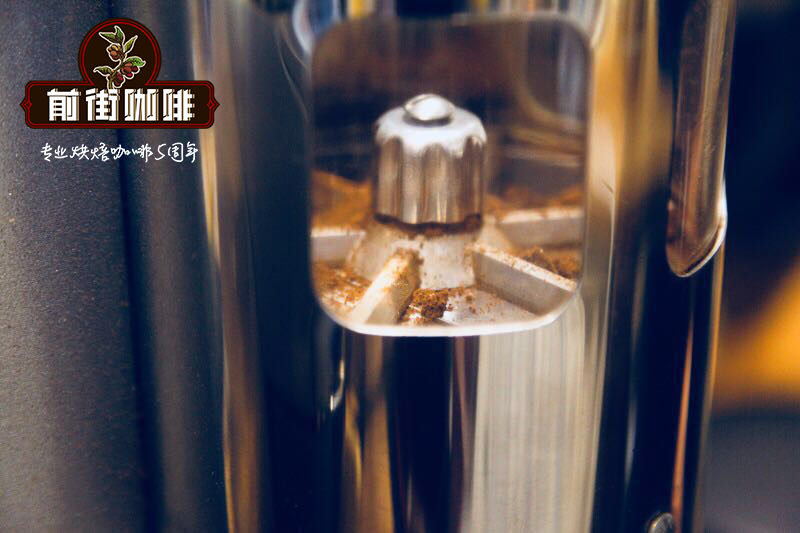Espresso | often the extraction of a cup of unsatisfactory espresso ignores the knife head of the bean grinder

What is the cutter head of the bean grinder made of?
The standard cutter head is made of "quenched" steel, which is hardened by rapidly cooling the outer surface of the cutter head. Rapid cooling causes the steel to form a specific crystal structure called martensite, making it harder and more fragile. This process results in the cutter head having a hardened shell and a softer core. This means that once the hardened shell is worn, the cutter head will wear out faster.
Although this means that there is a strict limit on the service life of the cutterhead, the fact is that the taste and grinding quality of the cutterhead will gradually deteriorate throughout the service life of the cutterhead, so replacing the cutter head earlier will improve the service life and quality of the cutterhead.
More advanced cutters may have a thicker hardened layer or are made of hard materials that run through the process (chrome steel, tool steel, or even ceramics). They may also be covered with harder materials, such as golden titanium nitride (TiN) or "red speed" coating, which can greatly extend the life of the cutter head.
Which materials are used in the cutterhead and when to replace them is essentially a tradeoff between quality and replacement cost. However, you can use some metrics to help you decide when to make changes.
Manufacturer's suggestion
The manufacturer will issue the recommended service life for each cutterhead design, so this is a good starting point. However, the way they arrive at these figures may vary from manufacturer to manufacturer, and they may try to exaggerate their service life (or they may underestimate it to sell new cutters more frequently).
Coffee can usually be ground for many years after exceeding the prescribed cutterhead life, but before that, the taste becomes obvious, and some professionals recommend replacing the cutterhead after half the recommended life.
The following is a list of some manufacturer's recommendations, which can be found on the Espresso Parts website, but we recommend that you look for current recommendations directly from the manufacturer, as they sometimes change.
Anfim Caimano (75mm flat burr)-change at 1300lbs throughput
Bunn G Series-change at 40000lbs throughput
La Marzocco Swift (64mm ceramic flat burr)-change at 3300lbs coffee throughput
Mahlkonig K30-change at 1600lbs coffee throughput
Mahlkonig EK43-change at 14300lbs coffee throughput
Mahlkonig Tanzania-change at 8000-10000lbs coffee throughput
Mazzer Mini (58mm flat burr)-change at 660lbs coffee throughput
Mazzer Mini E-(64mm flat burr)-change at 660lbs of coffee throughput
Mazzer Super Jolly (64mm flat burr)-change at 880lbs coffee throughput
Mazzer Major (83mm flat burr)-change at 1300lbs coffee throughput
Mazzer Kony (63mm conical burr)-change at 1640lbs coffee throughput
Mazzer Robur 110V (71mm conical burr)-change at 1700lbs coffee throughput
Mazzer Robur 220V Three Phase (83mm conical burr)-change at 1800lbs coffee throughput
Nouva Simonelli MDX (64mm flat burr)-change at 1200lbs coffee throughput
Nouva Simonelli Mythos (75mm flat titanium burr)-change at 1500lbs coffee throughput
Extraction
A more objective measure of when to change the cutterhead is by measuring the extraction rate. With the increase of cutterhead age, the extraction uniformity decreased gradually. This means that the maximum extraction rate that can be achieved before setting astringency (extraction limit) will be gradually reduced.
If you follow a fixed diet, the total amount of extraction will decrease as the cutterhead wears away (Rao,2016;Socratic Coffee 2015). However, the amount of extraction does require the use of the same or similar coffee throughout the life of the cutter head, such as high-quality, consistent espresso. If you change your coffee frequently, you may need to look for other signs that the knife head has been exhausted.
Other indications
Although extraction is the simplest and most objective way to test burrs, other signs need to be looked for. Most obviously, as the burr becomes less sharp, the grinder must work harder, which means it makes more noise, generates more heat and takes longer to grind the same amount of coffee.
You may also notice that the grinder cakes (Socratic Coffee, 2015), or the injection time becomes more inconsistent. All these signs indicate that the wear of the cutter head begins to affect the performance of the grinder.
Compared with sharp cutters, extremely worn cutters produce more shavings, making them look cloudy during extraction or produce more solids at the bottom of espresso. However, by the time this happens, other signs of wear and tear have usually become quite obvious.
The traditional method to determine whether the worn rough edges are causing these problems is to check the cutterhead and feel the most cutting edge burr is usually caused by sharpness, dragging around the outside nail cutterhead. However, it depends on a clear memory of the look and feel of the new cutterhead.
Taste
Although extraction may be the easiest way to measure cutterhead wear, the final decision on when to change the cutterhead depends on taste. The Duller cutterhead produces less and less extract, causing the milk in the cup to become more and more cloudy, flat, sour or astringent. Switching to new, experienced burrs will once again provide you with a bright, shiny and transparent flavor.
Because this quality decline is a gradual process, you need to decide when to become too much, not the level of quality to be achieved. However, if you have any questions, it may be time to consider making changes. Replacing the cutter head may not be cheap-but low extraction rates and long grinding time can also increase the cost of your business.
Important Notice :
前街咖啡 FrontStreet Coffee has moved to new addredd:
FrontStreet Coffee Address: 315,Donghua East Road,GuangZhou
Tel:020 38364473
- Prev

Latte | Why does a good-looking latte sometimes bubble after a while?
If you leave the latte on the table for a few minutes, sometimes the bubble will start to burst, but sometimes it won't. Why? No matter how long you throw it, sometimes the latte will bubble. If you have ever had to make a new cup of coffee after sitting on the counter for a few seconds and then taste it, you know it can be frustrating. First of all, make sure it's not your technology.
- Next

Grindability of hand-brewed coffee | what is the effect of fine powder on brewing coffee? should we sift out the subdivision?
Back in 2012, our own Matt Perger won the World Coffee Brewing Competition by removing fine powder with a 250m sieve. This makes the extraction more uniform, so that he can extract a higher content without producing a dry, over-extracted flavor. But from then on, he came out and declared that Fine Powder was the devil. Actually, our last one
Related
- Beginners will see the "Coffee pull flower" guide!
- What is the difference between ice blog purified milk and ordinary milk coffee?
- Why is the Philippines the largest producer of crops in Liberia?
- For coffee extraction, should the fine powder be retained?
- How does extracted espresso fill pressed powder? How much strength does it take to press the powder?
- How to make jasmine cold extract coffee? Is the jasmine + latte good?
- Will this little toy really make the coffee taste better? How does Lily Drip affect coffee extraction?
- Will the action of slapping the filter cup also affect coffee extraction?
- What's the difference between powder-to-water ratio and powder-to-liquid ratio?
- What is the Ethiopian local species? What does it have to do with Heirloom native species?

